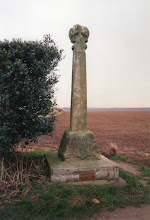We are very fortunate to have a growing number of charity shops in our local area (sadly, also reflecting the levels of misfortune in our society). These present a treasure trove for the wargamer - loads of opportunities to pick up odds and ends that supplement terrain and other such goodness.
I always cast an eye over the games in the kids section just in case there is a classic to be had. Recently, I picked up a 'new in the box' copy of that classic Australian game of sheep stations - Squatter - for all of $5.
However, last Saturday I hit the jackpot. Sitting in a dark corner of the window display was a copy of Avalon Hill's
Flight Leader: Game of Air to Air Jet Combat Tactics, 1950 to the Present (which in this case was 1986!).
Now, I'm not really a 'modern' air combat kind of guy - a copy of Wooden Ships and Iron Men, Ironclads, or Jutland would be the ultimate find (all of which I have owned years ago but foolishly divested myself of).
The price tag? $10! There was also a copy of the old 1976 Jedko Games classic -
Field Marshall. $50 (a bit pricy for me). While I am firmly a miniatures gamer these days, every school holidays of my early teens (in the 1970s) would include a pilgrimage through the industrial parks south of Moorabbin Airport (Melbourne, Australia) to Jedko Games (in Fonceca St).
 |
| My best mate, Gary, and I (both dedicated warmers) would make the trek by bus to Moorabbin (with refreshment stops along the way) and then walk through the (then) almost post-apocalyptic industrial landscape to Jedko Games in a tiny backstreet. They were the Australian mail order distributer of every wargame under the sun - they had a little shop in the front of the warehouse. A few mad minutes spending our saved paper-round wages and then home to two weeks of school holiday gaming! |
Board wargaming was the natural extension of my early years 'fighting' with 100s of Airfix soldiers and tanks in the back yard. But I 'moved on' in my late teens and sold the huge collection of games I had (I guess I sold them - I have no idea where they went).
So ... I walked by this 'blast from the past', not initially drawn to the subject matter of the game. A few hours later I was kicking myself. What was I thinking - $10! I could easily make more than that on-selling it. Especially if it is unpunched and in good conditions (the box looked good).
Then I started to think of all those classic Cold War scenarios of my youth: MiGs vs Mirages over Gaza, Argentinian A-4 Skyhawk's and Sea Harriers over Bomb Alley off the Falklands etc. ... OK, I was hooked!
It was a very wet weekend so I hoped that there would not be too much passing traffic and late on Sunday afternoon (as they were packing up) I managed to get back and left $10 lighter but with a good-as-new copy of Flight Leader (30 years old!) wedged under my arm.
I've not had time since to delve into the rules, but thought it would be fun to do an 'unboxing' of sorts. Some pictures follow ... enjoy the nostalgia!
 |
| Flight Leader (IMHO) ranks among the best cover art of the Avalon Hill Bookcase Games |
 |
| The blurb on the box hints at an interesting game - 30 second per turn, playtime 30 mins to 3 hours, game design by a USAF fighter pilot, high solitaire playability! |
 |
A d10 in a board game was pretty unusual in those days from my experience! The first glimpse suggested
the game was in good order. |
 |
| Huzzah! Unpunched counters, all the components in good order. This has sat on a shelf and never been played. |
 |
The introductory rules hint at an easy way into the game. You can add detail from the advanced rules
at your own pace, it seems. |
 |
| Aircraft status cards - looks like plenty of room to add colour to the game here. |
 |
| I quite like the old sillohuette images - has that plane spotter feel to it! Homing in on the Harriers in this shot! |
 |
| The Swedish Saab Viggen was designed with the "..ability for it to be operated from straight stretches of rural highways only 500 meters long; this was considered critical to reducing the vulnerability to attack in the event of a pre-emptive strike upon the nation through the dispersal of aircraft from established airbases to more austere improvised landing strips." Source: http://www.wikiwand.com/en/Saab_37_Viggen |
 |
| Some of the the Eastern Bloc et al! |
 |
| Loads of status counters! |
 |
| ... and then there was the map. Looks really nice for Europe and maybe Vietnam ... perhaps looses a little of the feel for encounters in the Middle east and Falklands. Still, a nice board by any standards. |
 |
| Board detail. |
 |
| Of course, the obligatory 'affix a stamp and return' card to get on the mailing list! Not an email address or URL in sight - love it. Also, who can forget General magazine! |
That's it for the unboxing. Its probably obvious by now that it's not getting sold! I might even post a report of a game at some stage. Best $10 I've spent in some time!
Thanks for dropping by.




























































